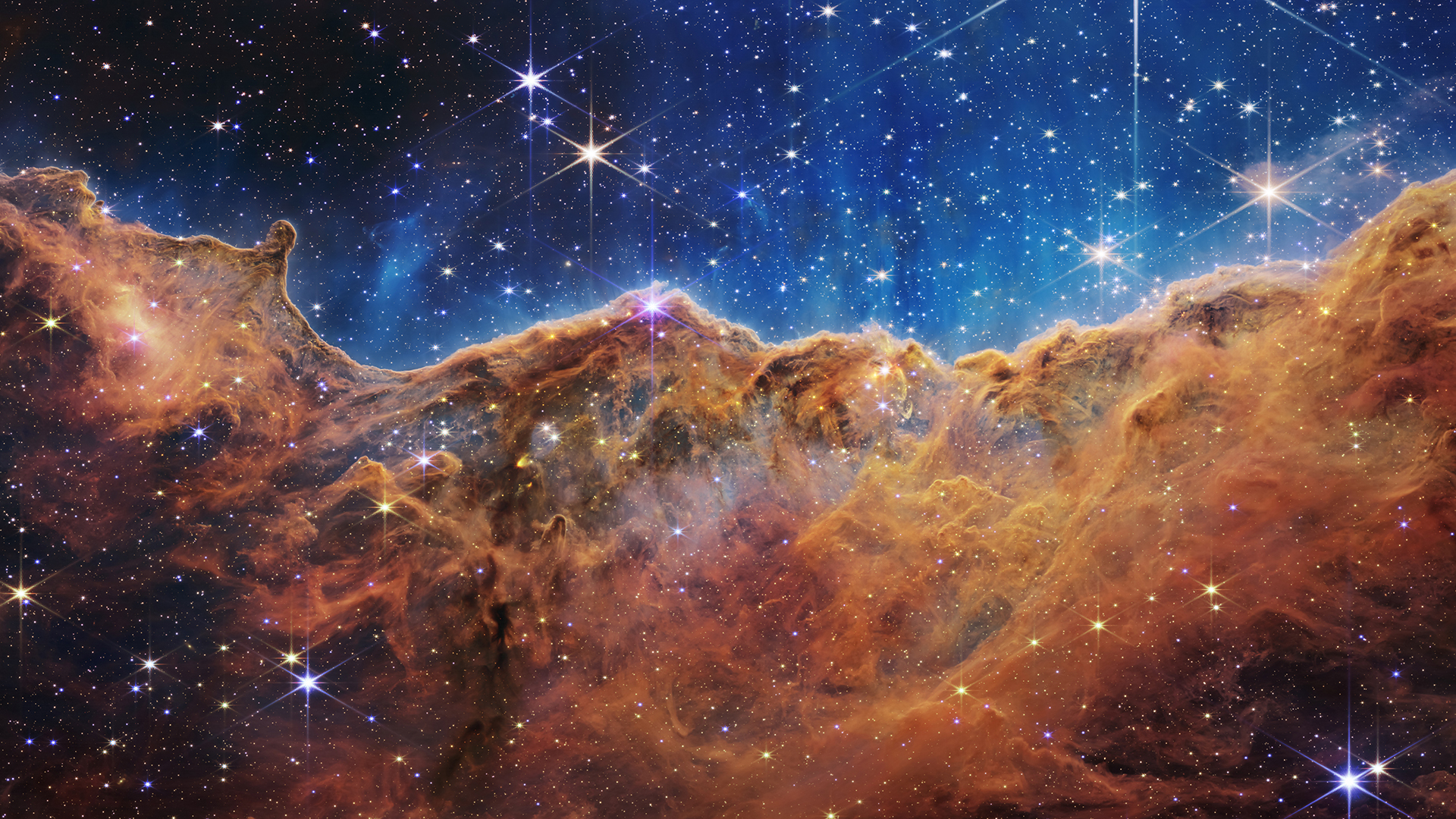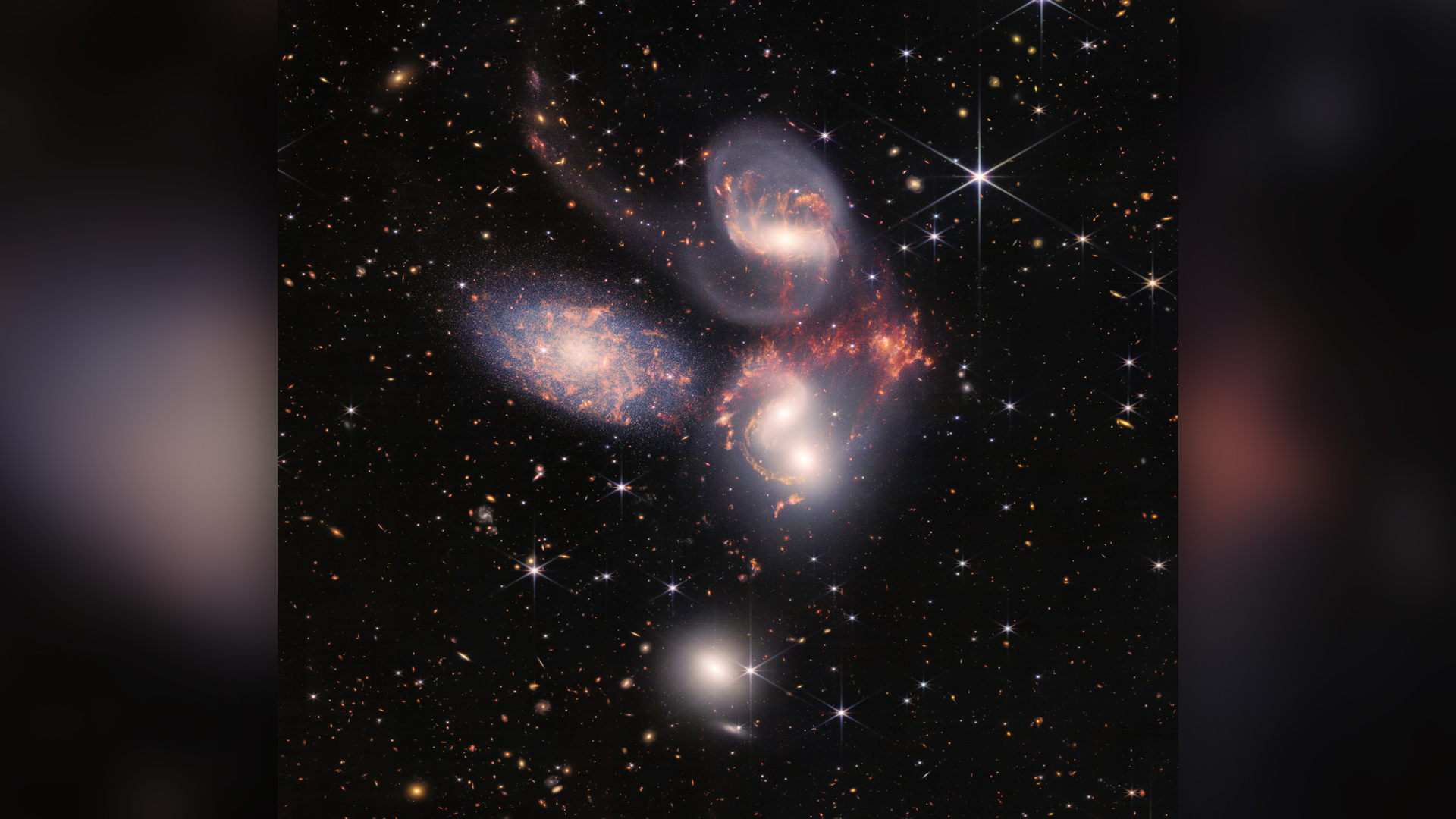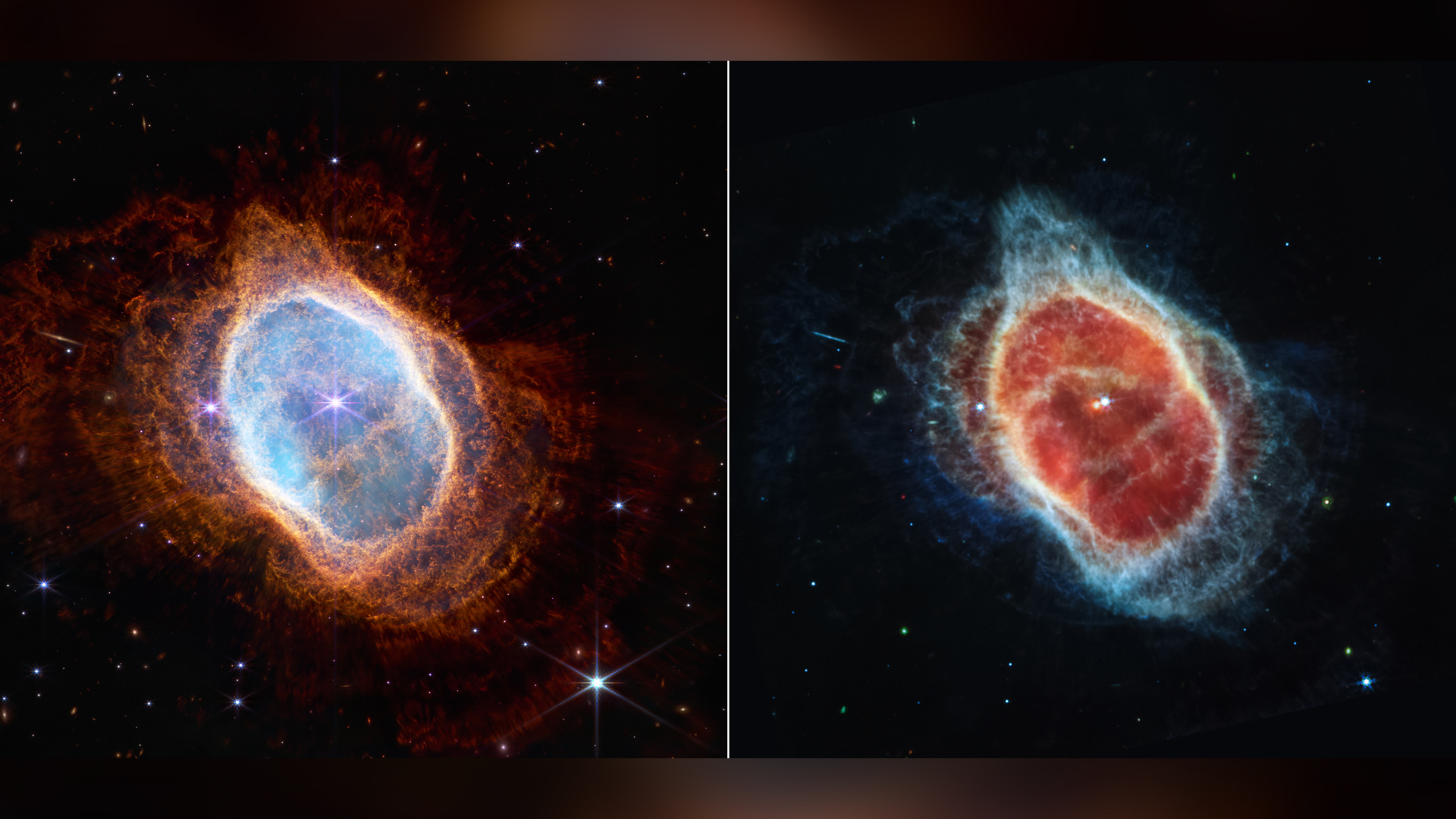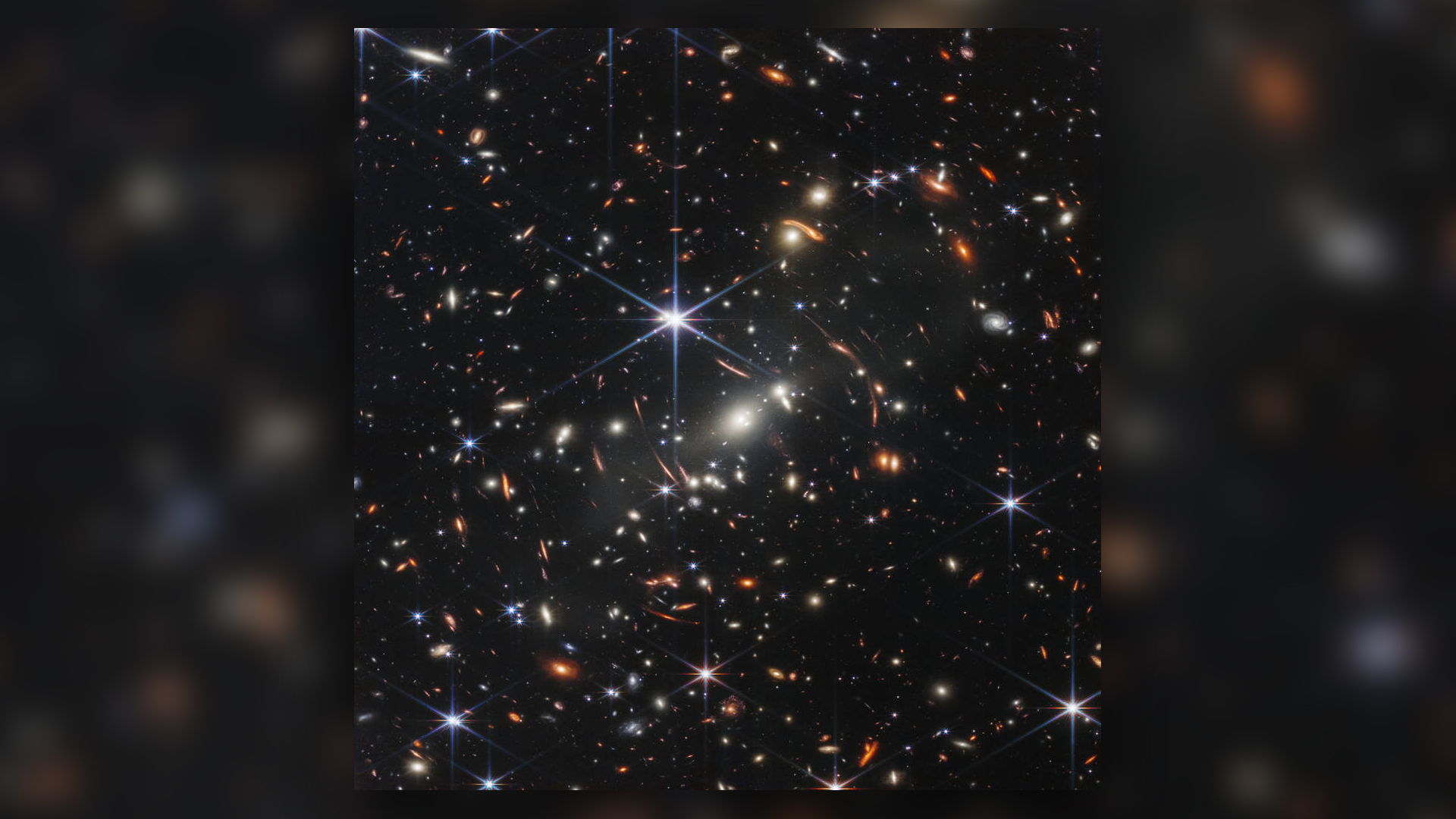The James Webb Space Telescope's first images are here, and they're spectacular
The most powerful telescope in history reveals its debut images.

NASA has released the first suite of images from the newly operational James Webb Space Telescope, revealing the wonders of our universe in more detail than ever before.
Stars explode in spectacular orange and blue light. Galaxies writhe and dance around each other in a tangle of dust and baby stars. An alien planet pulses with haze. Some of the oldest light in the known universe — emitted more than 13 billion years ago — bends around massive potholes of gravity to shine before our eyes, clear as day.
"Every image is a new discovery and each will give humanity a view of the universe never seen before," NASA administrator Bill Nelson said in a press conference today (July 12) before revealing the images. "This telescope will be able to penetrate dust clouds and see light from the far corners of the universe."
But to showcase the telescope's capabilities today, NASA — along with representatives from the European Space Agency and the Canadian Space Agency — released five debut images of fascinating objects located a little closer to home.
Stephan's Quintet, a galactic party of 5
Webb's first targets include Stephan's Quintet, a group of five tightly-bound galaxies located 290 million light-years away in the Pegasus constellation. Four of the tight-knit galaxies continuously swoop past one another in a dangerous dance of near-collisions, NASA said.
The incredibly crisp new image reveals that two of the galaxies are actually in the process of merging into each other. Gouts of gas and dust heat up between the colliding galaxies, resulting in the creation of new stars.
Studying galaxy groups like this could help scientists better understand how gravity behaves at the largest scales, possibly yielding insights about the mysterious substance known as dark matter — an invisible, massive entity that's thought to hold much of the universe together.
Get the world’s most fascinating discoveries delivered straight to your inbox.
The Carina Nebula, a cosmic baby boom
Another stunning image showcases the Carina Nebula, a bright and gassy hotbed of star formation located approximately 7,600 light-years from Earth in the southern constellation Carina. The nebula is one of the most active star-forming regions ever discovered, Live Science previously reported, and is home to many stars much larger than our sun.
Scientists have studied this nebula extensively, but the new image reveals the "cosmic cliffs" of Carina in more stunning detail than ever before. Hundreds of newborn stars, previously invisible to telescopes, shine throughout the gassy landscape of the nebula. Jets and eddies of dust swirl through the image, creating strange structures that scientists can't even identify, according to NASA.
Studying nebulae like Carina, scientists will uncover fresh insights into the birth of stars, perhaps even exploring the origins of our own solar system.
The Southern Ring Nebula, stellar death in motion
Webb's next image shows the Southern Ring Nebula, or "Eight-Burst Nebula" — a figure-eight-shaped cloud of gas and dust expelled by a massive, dying star some 2,500 light-years from Earth. The spectacular image shows a glowing orange foam of molecular hydrogen swirling around a blue haze of ionized gas, bursting out of doomed star at the image's center.
Look closely at the mid-infrared image on the right and you can see a second, redder star twinkling next to the brighter, bluer one. Scientists knew the Southern Ring Nebula was a binary star system — however, this is the first image clearly revealing the second star, shrouded by clouds of dust. As with most Webb images seen so far, clearly visible galaxies photo-bomb the background of the pictures, hinting at untold discoveries yet to come.
The dust particles being flung into space by the dying star could one day coalesce into the seeds of new stars and planets, Live Science previously reported. Studying nebulae like this may help scientists better understand the cycles of stellar death and rebirth in the cosmos.
WASP-96b, an alien world cloaked in haze
The final image revealed today shows the giant planet WASP-96b, located about 1,150 light-years from Earth. This mostly gaseous planet measures about half the mass of Jupiter, but orbits so closely to its home star that one year on the planet lasts the equivalent of just 3.4 Earth days.
That quick orbital period is important, because it allows astronomers to easily study how light from the planet's home star is absorbed and reemitted by molecules in the planet's atmosphere. By breaking this spectrum of light down into its component wavelengths, scientists can discern the type and quantity of elements in the planet's atmosphere. This image reveals, for example, that there is a good deal of water vapor in WASP-96b's atmosphere.
Blazing hot, is unlikely to harbor life. However, astronomers plan to take spectrum images of many other planets beyond our solar system, advancing the hunt for life beyond our solar system.
Webb's Deep Field, the deepest image of the universe EVER
On Monday (July 11) President Joe Biden shared the first of Webb's debut images, showing a cluster of galaxies called SMACS 0723. The image shows the deepest view of the universe ever captured, revealing light that was emitted 13.5 billion years ago — very near the estimated beginning of the universe, roughly 13.8 billion years ago, according to NASA.
These full-color images are the culmination of NASA's 20-year project to launch a next generation space observatory to succeed the iconic Hubble Space Telescope. Costing nearly $10 billion to build, the Webb telescope is approximately 100 times more powerful than the Hubble, and capable of capturing incredibly crisp images of cosmic objects located billions of light-years away.
The Webb telescope was launched into orbit in December 2021, and began its first official operations about six months later. The telescope is now fully booked for its first year of science operations, with plans to study everything from black holes to cosmic expansion to the origins of the earliest stars in the universe.
According to NASA, the telescope has more than 20 years of fuel on board — so, stay tuned to Live Science for more updates on the most powerful space telescope ever built, and the fascinating discoveries to come.
"Today, the Webb mission is open for scientific business," Michelle Thaller, assistant director of science communication at NASA's Goddard Space Flight Center in Maryland, said in the broadcast. "And the best is yet to come."
Originally published on Live Science.

Brandon is the space / physics editor at Live Science. With more than 20 years of editorial experience, his writing has appeared in The Washington Post, Reader's Digest, CBS.com, the Richard Dawkins Foundation website and other outlets. He holds a bachelor's degree in creative writing from the University of Arizona, with minors in journalism and media arts. His interests include black holes, asteroids and comets, and the search for extraterrestrial life.






